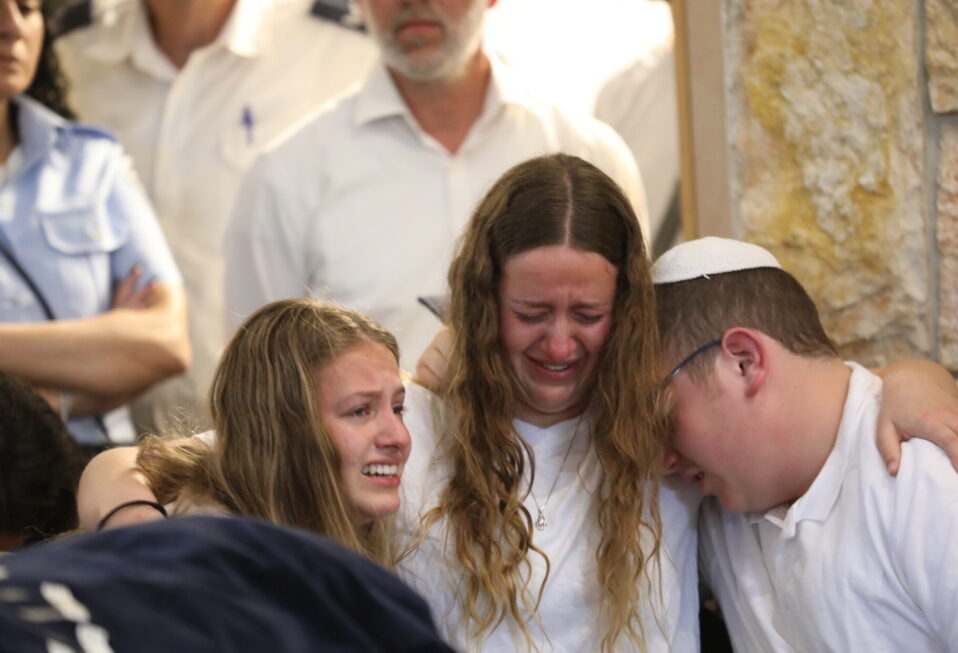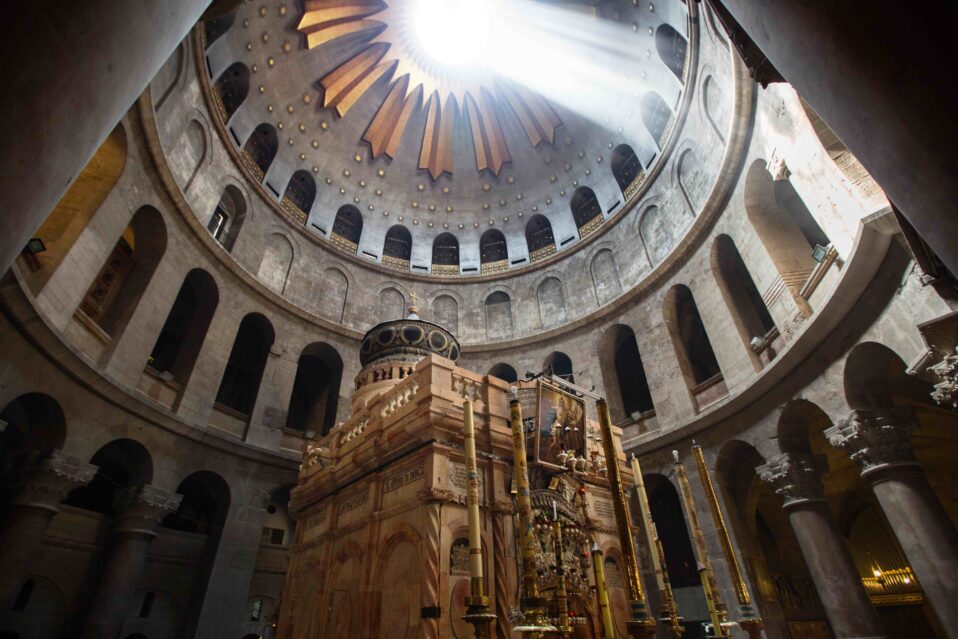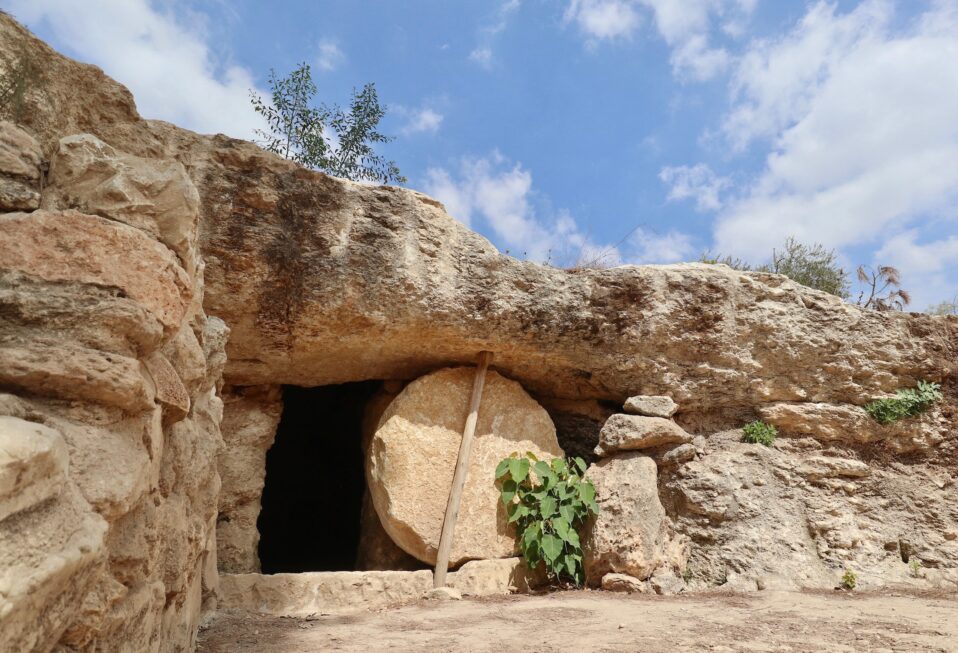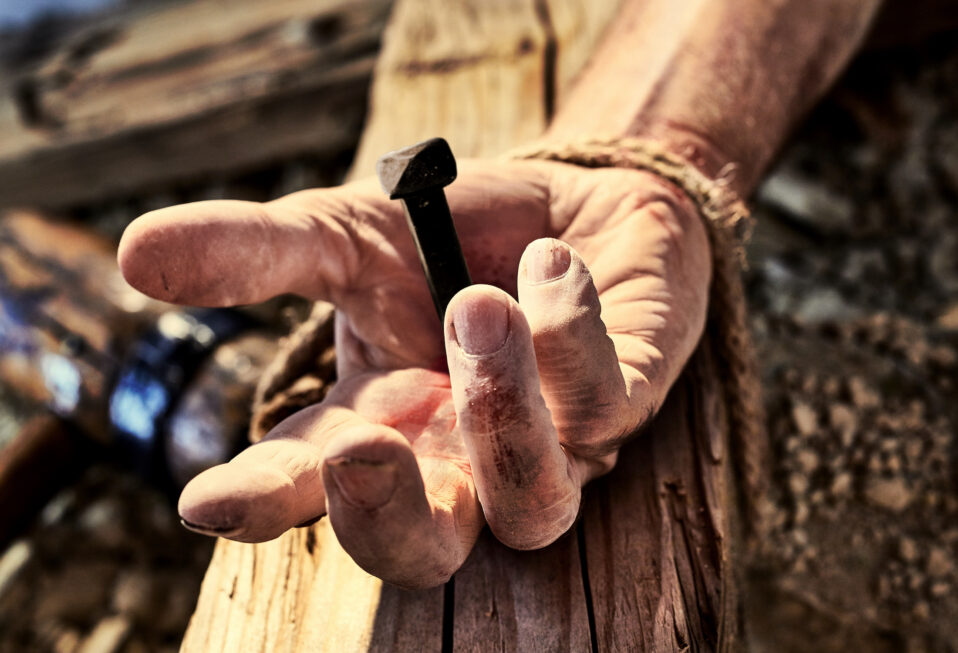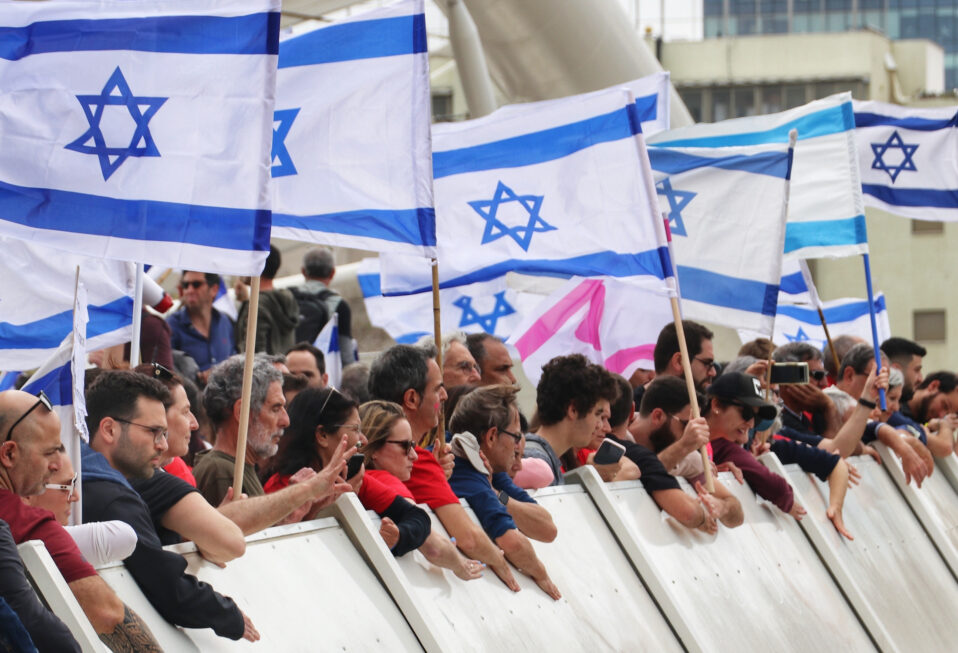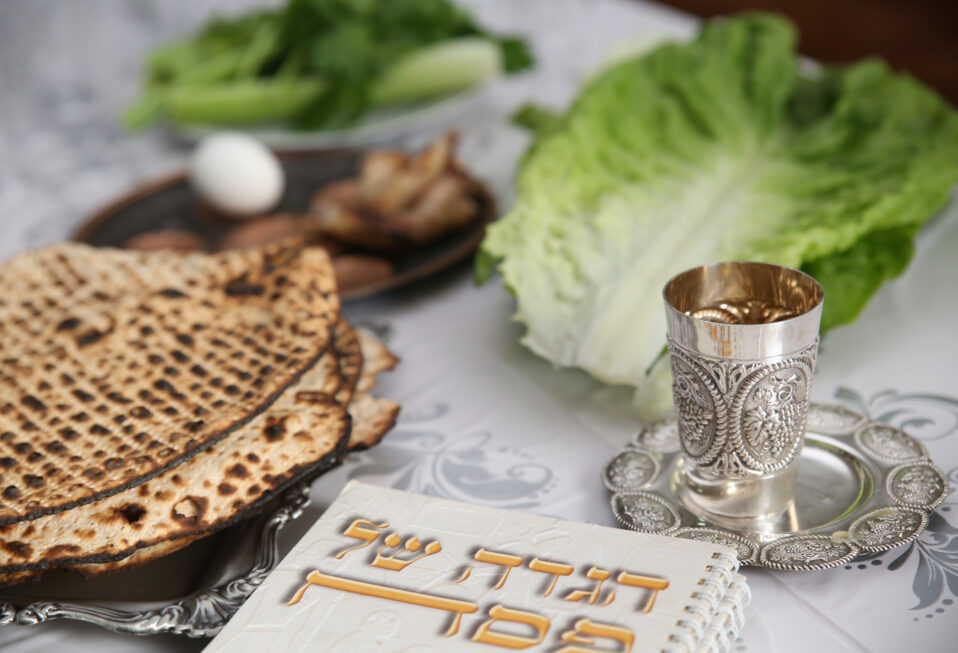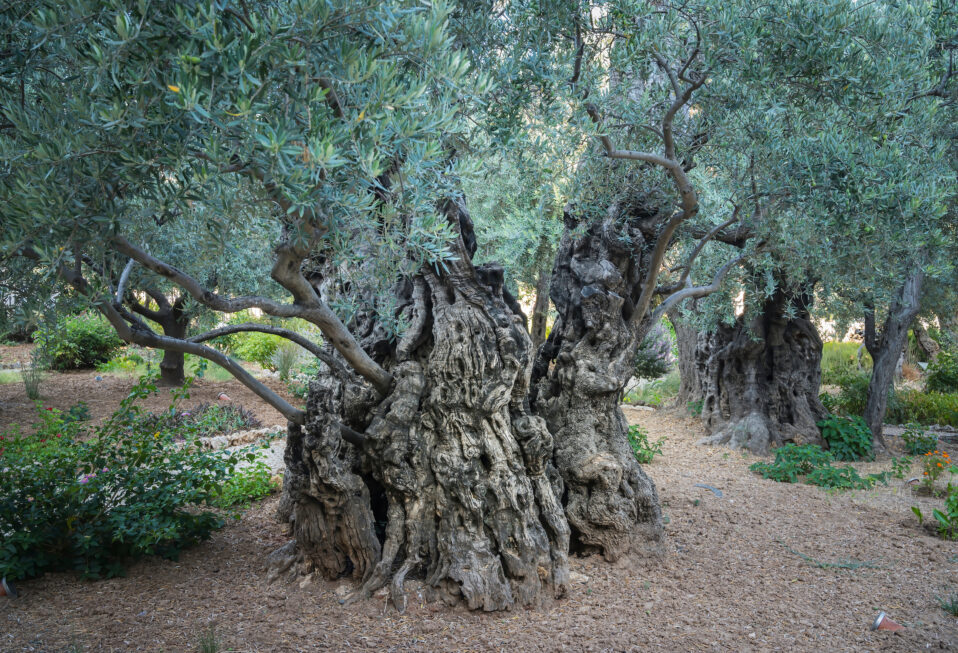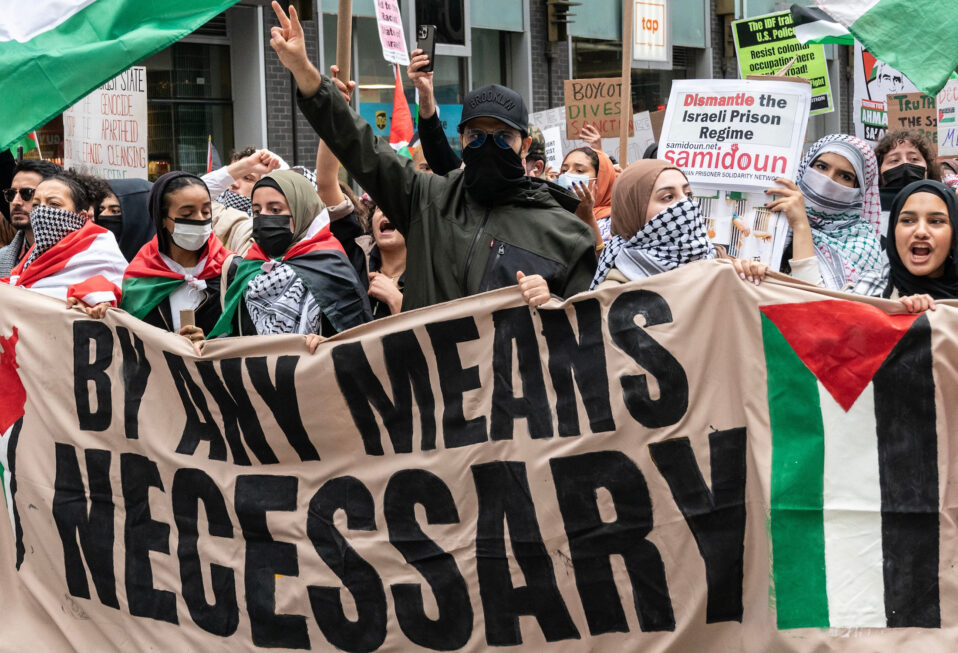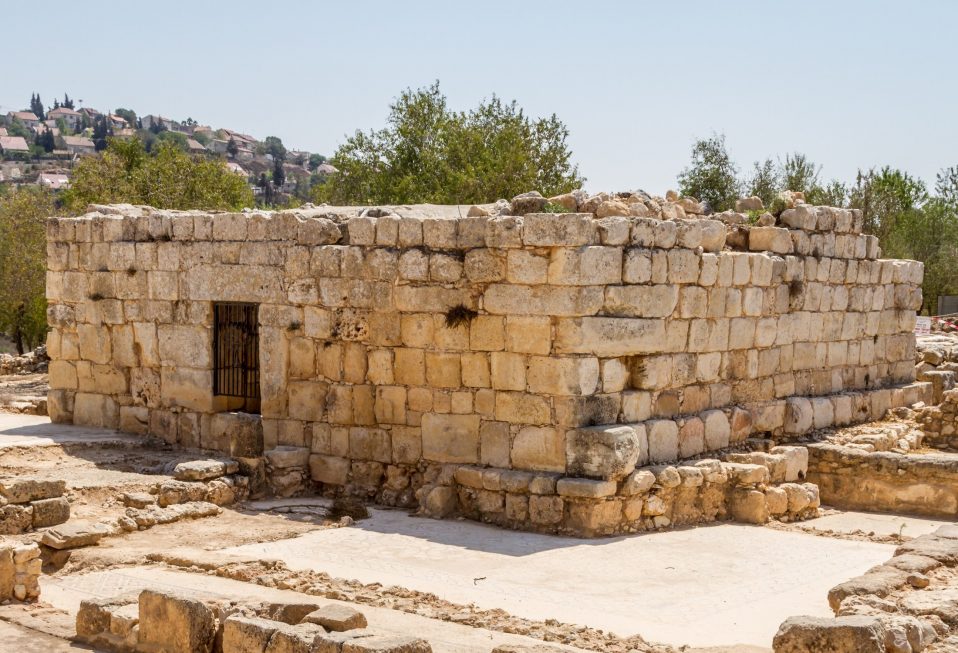By Arlene Bridges Samuels
You may not immediately recognize the names of Leah, Maia, and Rina Dee who lived in Efrat, Israel. Years ago, I stayed in this beautiful town seven miles south of Jerusalem, where more than 13,000 residents—many of whom immigrated from the United States—practice their Jewish faith, hold Old Testament ideals and professional positions, and love their ancestral homeland.
Last Friday, Leah, Maia, and Rina set out on a family trip from Efrat to Tiberius for a joyous Passover visit. On the way, two Islamic Palestinian terrorists pulled up beside their car and fired on them. The car plowed off the road. In their frenzied hatred, the killers then fired 22 more shots from their Kalashnikov assault rifle, murdering sisters Maia (20) and Rina (15). The murderers mortally wounded their mother, Leah (48). She died Monday in an Israeli hospital.
Traveling in another car further ahead, Rabbi Leo Dee and their three other children were unaware of this tragedy. He received a phone call from his sister, who had heard of an accident on that route and was checking to make sure they were all safe. Appalled, Rabbi Dee retraced his route—and discovered his family’s catastrophe. On Sunday, Rabbi Dee and his remaining children buried Maia and Rina together in a double funeral. The funerals took place with Rabbi Dee’s emotional, eloquent remarks.
Rabbi Dee’s three family members were complete strangers to the murderers. They died for one reason: They were Jewish, viewed as mere objects in the face of coldblooded hatred. Passover ended in Israel on April 12. However, the suffering of the four remaining family members, and the town of Efrat residents who grieve with them, is stamped into the Dees’ hearts for all their days as they walk through their valley of the shadow of these senseless deaths.
Two of my Israeli friends who live in Efrat attended the funerals. Rabbi Shmuel Bowman is the CEO of Operation Lifeshield, which delivers portable bomb shelters to at-risk communities under rocket attack. Jonathan Feldstein is the creator of the Genesis 123 foundation, which designs meaningful partnerships between Jews and Christians. Both leaders have built outstanding friendships with the Christian community worldwide. I am honored to know them.
Shmuel observed on the day of the Dee family murders, “The disgusting thing about this tragedy is the response by the Palestinian leadership and also many ordinary Palestinians. As noon prayers ended today [Friday] on al-Aqsa Mosque in Jerusalem’s Temple Mount, hundreds of people chanted in support of the deadly terror attack… How could a human being act joyfully about such an act?”
Two days later, returning home from the double funerals, Shmuel described it as a “difficult, long day,” with thousands at the funeral crying yet reciting psalms about healing and strength “focused on the power of prayer as a force for life.” He emailed me Monday after learning about Leah’s death, revealing, “Now the sacred work of helping my friend Leo and his family, as they navigate the challenging road ahead.”
Jonathan Feldstein had already set up a link at Genesis 123 when Israel came under rocket fire from three different enemies in Gaza, Lebanon, and Syria. Calling the murders “horrific,” Jonathan goes on to say, “Despite the threat of terror and war being real here, there’s an indescribable sense that our children are actually safer here than in most parts of the world.”
Feldstein cites a study that Israel is the fifth-safest place in the world for tourists, far safer than the U.S. He asks, “How is this paradox possible?” and observes, “We live our lives with purpose. We are here as part of God’s promise to restore us to the Land He gave to Abraham, Isaac, and Jacob and their descendants. That’s us.” He goes on to regale Passover’s festival of freedom, commenting: “Sometimes, there’s a horrible price to pay. It’s not always easy. But even at times of great domestic strife, we come together as we have now.”
A memorable line from Leon Uris’s Exodus summarizes what Israelis bravely deal with daily: “Why must we fight for the right to live, over and over, each time the sun rises?”
On to the mainstream media, illustrations are plentiful, but a few examples show propaganda-imitating strategies from Hitler’s marketing machine against Jews. Unfortunately, it mostly overrides facts about Israel’s longing for peace 75 years later, demonstrating another malignant escalation of the world’s longest hatred.
Palestinian Media Watch (PMW) is a reliable non-profit Israeli research institute that provides in-depth information about Palestinian society. Here is an example of where innocent Israeli deaths are perpetuated by the Palestinian Authority’s “martyrdom” strategy despite the PA’s abuse of its own innocent children:
“The PA encourages children to see Martyrdom—death fighting Israelis—as something glorious that will bring them honor and popularity. They are told that … people will honor their Martyrdom and their pictures will be everywhere.” Children are brainwashed at summer camps, on children’s TV, and in their schools.
In an example from CNN on April 7, 2023, Becky Anderson, CNN host of Connect the World, stated, “Earlier this week Israeli police stormed the al-Aqsa Mosque in Jerusalem, one of Islam’s holiest sites. They did that twice. They arrested hundreds of Palestinians.” For a few seconds she mentioned Maia and Rina Dee. “Meanwhile, in the occupied West Bank, two Israeli women were shot and killed and a third critically wounded at what Israeli police are calling a Palestinian terror attack on an Israeli car that was driving in the occupied West Bank.”
Basically, CNN said twice that Leah, Maia, and Rina Dee were at fault for driving on a main highway in the occupied West Bank. In fact, the area is Samaria and Judea, Israel’s biblical heartland—and one sister was a teenager.
Even worse—with no mention of Jewish murders—here is what Amnesty International added amid layers of lies: that a second consecutive night-time attack on Palestinian worshippers at Jerusalem’s al-Aqsa mosque “illustrates the sheer brutality of Israel’s apartheid. …These orchestrated attacks demonstrate just how far Israeli authorities will go to maintain their cruel system of apartheid. … Once again, Israeli security forces have shown the world what apartheid looks like … turned one of the holiest sites in Islam into a crime scene.” But the exact opposite is true. Cause and effect are rarely well covered by mainstream world media.
Frequently, prior to Jewish holidays, Iran’s nearby proxies circulate lies that Jews are going to “invade and take over” the al-Aqsa mosque. This dangerous ritual is against the rules and protocol of the Muslim authorities themselves. The lies are the beginning of the conflict’s cause yet are almost completely ignored by the media.
Last Friday, after Ramadan prayers ended, dozens of Palestinians remained in the mosque for an overnight. Muslim worshippers at the al-Aqsa Mosque reported the facts, saying that the violent outbreak had been instigated by “Muslim extremists” who barricaded themselves in the mosque, imprisoned the worshippers there, and kept other Muslims from entering the mosque to pray. The perpetrators had backpacks filled with weapons, stones, and fireworks to use against the Israeli police who maintain security atop the Temple Mount.
After repeatedly trying to negotiate, the Israeli police were then forced to restore order. When they began clearing the mosque, the instigators then used their mobile phones to show that “the Jewish occupation is desecrating the third-holiest mosque in the world.” Thus, they accomplished their intended purpose. Never mind that hundreds of thousands of Palestinians are still praying on the Temple Mount during Ramadan, which ends April 20.
Some media reported earlier about the Palestinian mosque takeovers. However, when Israeli police cleared out the worshippers from the mosque, mainstream media instantly latched onto that event—excusing perpetrators and terrorists, and instead blaming Israel with outsized lies.
Cause is now ignored, effect is amplified, and leftist broadcasters covered the murders of Israeli civilians like Leah, Maia, and Rina Dee as if they were not human beings. While Palestinians gave out candy in their streets to celebrate the Jewish sisters’ deaths, Rabbi Leo Dee declared through his tears at the double funeral, “The formula for faith is always to focus on what you do have and not what you do not have. I still have three wonderful children and a wonderful wife.” Today, he cannot claim that last blessing—he is now a widower.
We urge you to join our CBN Israel team this week to pray repeatedly with Psalm 59:1-3: “Deliver me from my enemies, O God; be my fortress against those who are attacking me. Deliver me from evildoers and save me from those who are after my blood. See how they lie in wait for me! Fierce men conspire against me for no offense or sin of mine, LORD” (NIV).
Prayer Points:
- Pray for the Dee family using Isaiah 42:3—“A bent reed He will not break off
And a dimly burning wick He will not extinguish; He will faithfully bring forth justice.”
- Pray for the rapidly evolving security challenges Israel is facing where their enemies sense weakness and disunity within the population.
- Pray for Israeli military for readiness and willingness to lay aside unusual political disputes to defend their nation.
- Pray for Christians worldwide to become active purveyors of facts about Israel to counteract propaganda.
Arlene Bridges Samuels pioneered Christian outreach for the American Israel Public Affairs Committee (AIPAC). After nine years on AIPAC’s staff, International Christian Embassy Jerusalem USA engaged her part-time as Outreach Director for their project, American Christian Leaders for Israel. Arlene is an author at The Blogs-Times of Israel, guest columnist at All Israel News, and has frequently traveled to Israel since 1990. She co-edited The Auschwitz Album Revisited and is a board member for Violins of Hope South Carolina. Arlene attends Israel’s Government Press Office Christian Media Summit and hosts her devotionals, The Eclectic Evangelical, on Facebook.



